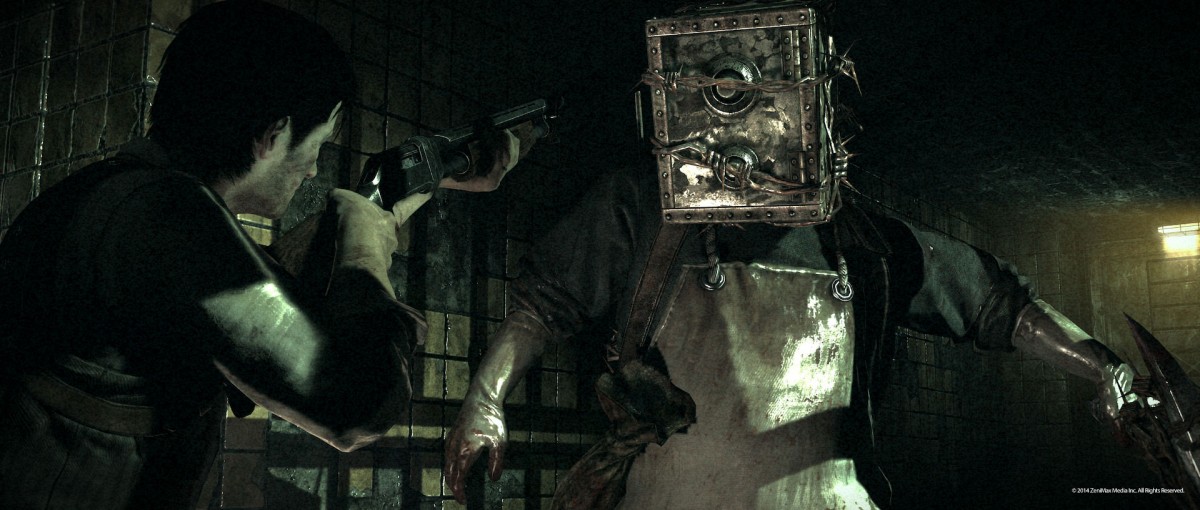‘The Evil Within’ review
Greg Alexandropoulos
Connector Staff
First and foremost, people need to understand one thing: “The Evil Within” is a very important video game for the industry. Big budget horror games do not happen very often, and this project, from “Resident Evil” creator Shinji Mikami, needed to be a hit. This is important not just for horror fans, but to show everyone that these games can move units and have mass appeal.
Horror games have always been known as the “ultimate rental”: you play through it once, enjoy the scary thrill ride and never play it again. These titles just don’t make money. Sure, “Dead Space” was a smash hit, but that was 2008. It’s 2014, and video game budgets are through the roof. We won’t see its sales figures for a while, but “The Evil Within” may just be everything “Resident Evil 5” should have been.
The game plays pretty much how gamers would expect from a Mikami project: exactly like “Resident Evil 4”… with some twists. There is a higher emphasis on stealth than usual, and ammunition is extremely limited. There are very few instances where the player will be fully stocked with items and equipment: “The Evil Within” forces the player to strategize and use resources sparingly.
Beyond the typical handgun/shotgun items, the player is given the Agony Crossbow very early on, and with that, they can create trap-bolts to combat against enemies in a variety of ways. There are explosive, flash bang, and freeze bolts, among others, that can be used against enemies directly or to set traps for them to walk into.
On top of this, players can upgrade their weapons and abilities with a very thorough upgrade system. (This is similar to the money system of “Resident Evil 4,” except this time currency is “green gel.”) Overall, the combat and gunplay are highly enjoyable from start to finish.
Although the combat is strong, there is a larger emphasis on stealth gameplay. Players can hide under beds, in closets and in other locations to avoid combat with enemies or to sneak up behind them.
Some sections require mandatory stealth play, whereas others allow players to choose whether they want to take a challenge head-on or stay hidden. It is consistently thrilling and interesting to try out different strategies.
Between the stealth play and the combat segments, “The Evil Within” is paced extremely well and will keep players entertained until the end. There are very few dull or frustrating moments.
However, the game is not perfect. Enemy damage is extremely bloated, akin to the “Dark Souls” franchise, so you will find yourself dangerously low in health for most of the game. Because of frequent save points and checkpoints and the low efficiency of healing items, it is often more useful to die and reload a save point rather than wasting all of your healing resources. Also, there are a few too many one-hit-death attacks from bosses; this could have been avoided via “Resident Evil 4” quick-time events or some sort of dodge mechanic. Constant dying and restarting checkpoints during boss encounters tend to break up the immersion of the experience rather than feel like a challenge.
The narrative in “The Evil Within” also suffers from a few flaws. The main characters are under-acted and a bit deadpan in their approach to telling this otherwise interesting psychological-horror story. To avoid spoilers: there are some very intriguing and sad bits of back-story that never get talked about, or fully fleshed out, which is a shame, because “The Evil Within,” for all its craziness, is not too far-fetched or ridiculous. The story isn’t necessarily believable, but it’s nothing to laugh at, either. The developers did a good job setting up the atmosphere for almost every segment of the game and really made it come alive. It does tend to jump around a lot, with the excuse being it’s all one big mind-game, but the story remains interesting all the way up until its satisfying conclusion.
Unfortunately, the biggest problem with “The Evil Within,” despite all of its positive qualities, is that you can’t shake the feeling that it’s just another “Resident Evil 4” clone. Yes, Mikami was the director of both games, but it’s time to let “Resident Evil 4” go.
“The Evil Within” looks like “Resident Evil 4,” plays like “Resident Evil 4” and the enemies act just like they did in “Resident Evil 4.” This is just the same game from 10 years ago, but more difficult and slightly sloppier. It’s highly enjoyable, but ultimately forgettable. The influence “Resident Evil 4” had on the industry was massive, but those gameplay tropes have been tired out and overused.
Yes, this is the game “Resident Evil 5” should have been, but If Shinji Mikami wants to revive survival-horror, we need to see something new.
Final Grade: B-




